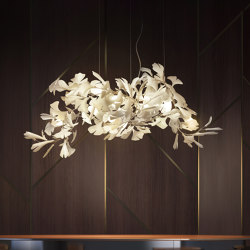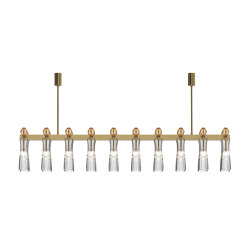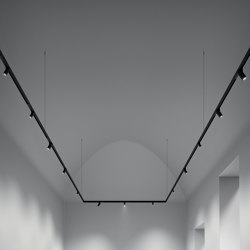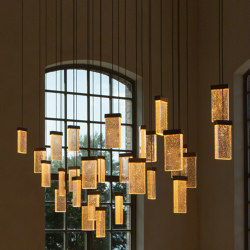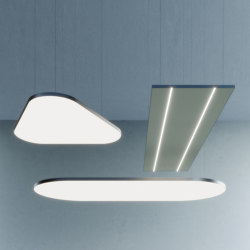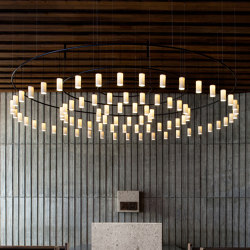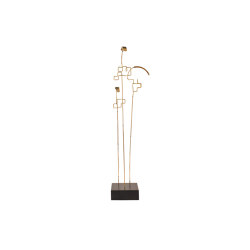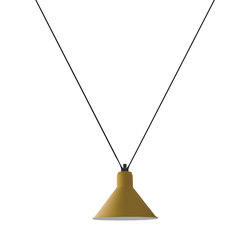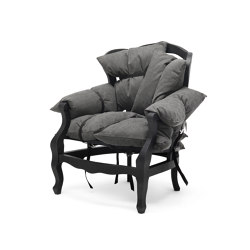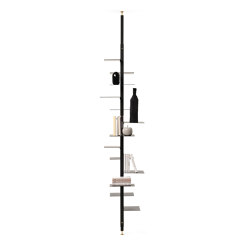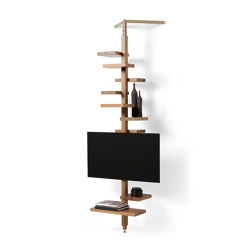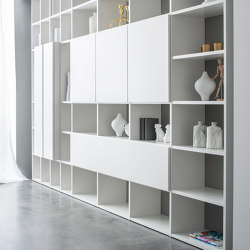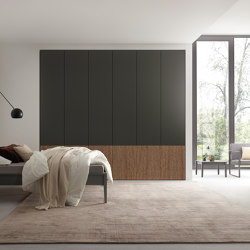À propos de LOBMEYR
EN SAVOIR PLUS SUR LOBMEYR
Our Crystal
“The fascination about glass? – It is one of the oldest
materials mankind understood to shape. Imagine: You
melt some sand and look at the result.” Ted Muehling
The technique of melting quartz sand and shaping objects of enduring cultural
value dates back to the fourth century before Christ. The approach to the quality
of glass we take foregranted today was slow and careful. Glass has always fascinated
mankind. With its transparency, its unique shiny surface and its play with
light and reflection, glass has properties otherwise only found in diamonds or rock
crystal.
This fascination for crystal has been the driving force behind Lobmeyr for almost
200 years. Through six generations the properties of crystal have been tested
and researched and its handling and forming possibilities explored. Thus we have
learned how to make the magic of the material enduringly visible. We concentrate
on the virtuous technical handling of this challenging substance, on lovingly crafted
details and subtle shine instead of “loud” glitter. Regardless whether wafer thin
blown muslin glass or glass that owes its shape to cutting – Lobmeyr reinstates the
beauty of this omnipresent material, bringing elegance and refinement back to
everyday life.
Family – Company – Cultural History
Lobmeyr is in its sixth generation as a family business today.
A love of the material, the emotional relationship with the product
and the commitment of personal energy defined our method of
working from the beginning. In this context each generation
leaves its trace.
In 1823 Josef Lobmeyr senior founds the company in Vienna’s Weihburggasse and soon becomes Purveyor to
the Imperial Court. Josef and Ludwig Lobmeyr (1855– 1917): Ludwig becomes the pioneer of Austrian/Bohemian crystal production and presents the company at the first World Fairs; in 1864 he is the co-founder of the
Austrian Museum of Applied Arts in Vienna. Ludwig’s nephew Stefan Rath senior (1902–1960) leads Lobmeyr
into the Modern Movement and is a co-founder of the Österreichischer Werkbund in 1912. Enduring classics are created in cooperation with Josef Hoffmann and the other artists of the Wiener Werkstätte. Hans Harald Rath (1938–1968) rebuilds Austrian crystal manufacture after the war and revolutionises the chandelier. An example
of his work still hangs in the auditorium of the Vienna State Opera today. Harald, Peter and Stefan Rath (1968–2008) expand the company, enter the Arabic and Japanese markets and open a store in Salzburg.
In 1972 the chandelier manufacturer Zahn (founded 1780) is acquired. Andreas, Leonid and Johannes Rath
(from 2000) grow the international sales activities and focus on co-operations with a new generation
of designers.
Tradition of Renewal
Though Lobmeyr continually focuses on the contemporary interpretation of glass,
it has never stopped cultivating its heritage. The old inspires the new, traditional
know-how facilitates innovation.
An astute eye for new movements has always characterised Lobmeyr’s work. Designers give new
impulses, at the same time the past is made available for today: our unique archive documents almost
200 years of activity and is not just a treasure trove of samples, but also a source of inspiration.
However, our day-to-day work with crystal is the primary breeding ground for new ideas. Our interest
in glass and a constant dialogue with our craftspeople, designers and clients repeatedly leads
to directional innovations. In 1856 Ludwig Lobmeyr introduced a, for the period, startlingly simple design
with his “Trinkservice No.4” (Drinking set No.4) – still a design icon today. In 1883 Lobmeyr delivered the
first electric chandelier – a worldwide sensation – to Vienna’s Imperial Palace. In the 1950s Hans Harald
Rath designed the first chandelier using Swarovski strass. Adolf Loos’ water set with a cut base in 1929 anticipated the simple drinking glass still valid today, whereas a more recent product, “Liquid Skin” (2001), completely dissolves the conventional form.
Designers for Lobmeyr
Lobmeyr works with outstanding designers. Whether the
architects of Vienna’s Ringstraße in the 19th century, the
pioneers of the Modern Movement or contemporary artists –
the list of our designers mirrors not only the diversity,
but also the quality of our work with crystal.
The Lobmeyr glass creators traditionally come from a wide range of backgrounds;
they are painters, architects or designers. Artists who take the special nature of
our material into account are important to us. The designers, on the other hand,
appreciate the opportunity of applying their ideas regardless of market restrictions
and equipped with all the possibilities and varieties of the craft. Glass is a complex
material, and necessitates the ability to understand and comprehend it, which often
results in longer-term cooperations. We appreciate designers with an understanding
of the current culture while at the same time possessing a perception for enduring
design. We aim for sustainable design with an everlasting beauty. Our glass should
be both: ingenious and at the same time a well-loved long-term companion.
Wiener Werkstätte and Art Déco
“… we should always avoid the pompous and continually
strive towards a better material and a more accomplished
construction. After all our life, insofar as it can be
taken seriously, obtains dignity through simplicity, honesty
and purity…” Josef Hoffmann, 1901
The friendship between Stefan Rath and Josef Hoffmann and the artists of the
Wiener Werkstätte, led Lobmeyr into the eye of the new revolutionary movement
in art and design in 1910. Compared to Historism, this was a totally “Modern
Movement”. The shapes became geometric, often lighter, more reduced. Stefan
Rath demonstrated his courage and candour from the outset by working with this
group of radical designers. Their designs challenged not only the prevailing taste,
but also the material glass, whether in the “architectural” style or as delicate muslin
glass. This period is an important chapter in Lobmeyr’s history and self-image.
Many of the creations from this period became milestones in the style history of
glass. In addition to Josef Hoffmann there were other outstanding designers such
as Oswald Haerdtl, Ena Rottenberg, Michael Powolny and Oskar Strnad. Together
they prepared the way for the enormous Parisian “Exposition des Arts Décoratifs
et Industriels Modernes” in 1925, resulting in the Art Déco movement. The Jury
awarded Lobmeyr the Grand Prix.
Crystal is Living Light
The crystal chandelier, a Baroque invention, has a 300- year-old
history of style and is still valid today. Regardless of where it shines,
the chandelier contributes a discreet festivity and a sense of elegance.
The crystal pendants on the chandelier had the purpose of increasing the source
of light – then the candle – thus enabling large rooms to be illuminated. The socalled
“fire” of a chandelier, the living combination of light source and cut glass,
is still one of the special aesthetic attractions of the chandelier today. The crystal
chandeliers by Lobmeyr date back to the historic styles and progress through history
to include the crystal chandeliers designed by the Wiener Werkstätte for electric
light and later the Art Déco period. In the 1950s there were the famous
“Viennese
Chandelier” and the “Coffee House Chandelier”, designed by Oswald Haerdtl
and Carl Witzmann. Asymmetric shapes and a movement towards light sculpture
dominated the 1960s. This can be seen in the “Starburst” chandelier designed
by Lobmeyr for the Metropolitan Opera in New York or the light columns for the
Concert House in Athens (2004). Lobmeyr has influenced the history of chandeliers
since 1850 and is still one of the first addresses for high quality historic and modern
chandeliers worldwide today.
Chandelier Manufacture
Lobmeyr consciously opts for handcrafted finishing in its
manufacture of chandeliers.
Know-how passed on through generations and a rich archive – the chandelier
workshop, for example, has over 10,000 cast models – allows the authentic recreation
of every style of chandelier, while also being a source of endless possibilities
for new ideas.
The body of the chandelier and its supporting components is the frame. In our
brass-welding workshop the middle column, chandelier arms, rings and other
parts are constructed; all these elements are still bent and formed by hand. Old
techniques such as the hammering of the “Nockerlprofil” for authentic baroque
chandeliers and a special kind of knurling for impressing delicate ornaments and
patterns often used in the French Empire period are still in use today. Equally important
is the surface finishing of the metal, not only for its visual effect, but also for
the durability of the finished product. Diversity is also important: a variety of gilding
techniques are available, as well as 17 shades of gold. As soon as the framework
has been completed, work begins on the chandelier’s “dress” – its crystal pendants.
Though the workshop has a large variety of pendant shapes for almost all chandelier
styles, special commissions are no rarity. Here we also prefer hand-cut crystal,
due to its improved shine. Finally the pieces are linked together manually – a piece
of wire is inserted between two crystal buttons or drops, twisted and cut – as this is
the most durable method and above all also the most visually pleasing.
Interior Design
An aesthetically pleasing ambience requires a harmonious
composition of light and space, of furniture and its context.
Lobmeyr chandeliers give stylish interiors the finishing touch.
We look forward to exciting challenges in interior design with light and are
equipped with over 5000 chandelier models and experience dating back several
generations. Starting with a personal consultation, we create made-to-measure
concepts. We not only offer solutions on the basis of our own chandelier designs,
but are also happy to execute already available plans professionally. We also offer
décor with antique chandeliers as well as their restoration. When involved early
on in building, conversion or renovation plans and in close collaboration with the
architect and constructor, we can design optimal bespoke solutions. We place a
high value on sustainability. This includes client friendly maintenance and operation
of the installation as well as technical and aesthetic durability.
Mirrors with a Soul
The reason we easily overlook mirrors today is their – and our –
omnipresence. Lobmeyr moves the mirror into the spotlight as a
valuable item of furniture as well as its role as a constructive, oft
playful component of the interior.
Carefully facetted mirror edges are typical to Lobmeyr mirrors. Mirror plates enhanced
by cutting and engraving make the difference in quality visible while opening
up a wealth of creative possibilities. We make mirrors according to traditional
patterns from our archives as well as modern and contemporary designs. In their
heyday during the second half of the 19th century Lobmeyr mirrors formed an integral
part of the interiors of many a palace along Vienna’s new Ringstraße.
The historic, however, has never obstructed our view of today. A more recent
project, the new interpretation of the Rococo style mirror by the jewellery artist and
designer Florian Ladstätter, is only one example. His water-jet cut “orchids” confront
the history of the mirror as well as obliterating the boundary between commodity
and art.
Muslin Glass – The Glassmaker’s Pride
Named after the finely woven french fabric “muslin”, this is crystal
blown to a thickness of only 0.7 – 1.1mm. It results in a drinking glass
with very dainty rim and an unforgettably delicate contact between mouth,
glass and refreshment.
Even an excellent glassblower needs many years of experience to create muslin
glass. The glowing melt hardens rapidly, so must be worked quickly and assertively.
Those watching glassmakers working in this way are always amazed at
their speed and virtuosity. Stunning is also the precision with which similar series
are shaped by hand – and yet the treasure of hand-blown glass lies in its minimal
irregularities. Muslin glass appears delicate, but is remarkably resilient thanks to its
inner elasticity and formal construction. In manufacture the glass is first blown into
wet wooden moulds. The resulting steam forms a “cushion” between the wooden
mould and the glass and is also responsible for the incomparable shine of the finished
piece. Stem and foot are joined free-hand by the master. After careful cooling
the annealed glass bubble is cut and the rim is smoothed and polished. A Lobmeyr
glass passes through at least 24 pairs of hands and four quality controls, the last of
which is always by a member of the family, before finally being available in store.
Working at the Wheel – Cutting and Engraving
Crystal is refined using traditional cutting and
engraving techniques in the Lobmeyr workshops. These
time-honoured methods give the glass its high value.
With the form-giving cut, larger amounts of glass from the annealed glass object, the man-made crystal from the glass works are removed. The object is pressed against wheels of varying shapes and using a variety of abrasives. A drinking glass requires up to 15 different wheels. The finish is also critical.
The industrial acid polish is not used as it removes the precision of hand cutting. Instead, the glass is
brought to shine using a special polish in three steps on rotating felt and cork wheels.
An exceptional decorating technique is copper wheel engraving. An abrasive is applied to the edge of a copper wheel and the glass pressed against it. An experienced engraver can create every required
shade and pattern by varying the rim profile and size of the disk, speed of rotation, abrasive and order
of cuts. Lobmeyr engravings include everything from the simple monogram to a diverse range of
decorations as well as large, elaborate pieces of work, the“paintings” on glass. Knowledge of this
craft has become increasingly rare and needs time and patience: An engraved letter requires an
average of one hour’s work. Pieces demanding over 1000 hours of engraving are no exception.
Individualisation
The personalisation of basic commodities, for example
with a monogram or inscription, is traditional. Crystal is
an excellent carrier – its beauty calls for personal appropriation,
its durability makes the message immortal – almost.
Whether slogan, symbol, star sign, dedication or company logo – the possibilities
and occasions for refining crystal according to the client’s request, to make it
“individual”, are manifold. The monogram is still a classic. In the past it was used
not only to turn commodities into representative objects, but also to mark them
simply and preclude a change of ownership. Today, in an age of mass production,
the idealistic character of the monogram comes to the fore; special commissions
and personal reference to an object have become important again. A small initial
or symbol is already enough to give simple pieces a special value. Lobmeyr has
a treasure trove of monogram books and artwork available, but is also happy to
execute a customised design.
Our Crystal
“The fascination about glass? – It is one of the oldest
materials mankind understood to shape. Imagine: You
melt some sand and look at the result.” Ted Muehling
The technique of melting quartz sand and shaping objects of enduring cultural
value dates back to the fourth century before Christ. The approach to the quality
of glass we take foregranted today was slow and careful. Glass has always fascinated
mankind. With its transparency, its unique shiny surface and its play with
light and reflection, glass has properties otherwise only found in diamonds or rock
crystal.
This fascination for crystal has been the driving force behind Lobmeyr for almost
200 years. Through six generations the properties of crystal have been tested
and researched and its handling and forming possibilities explored. Thus we have
learned how to make the magic of the material enduringly visible. We concentrate
on the virtuous technical handling of this challenging substance, on lovingly crafted
details and subtle shine instead of “loud” glitter. Regardless whether wafer thin
blown muslin glass or glass that owes its shape to cutting – Lobmeyr reinstates the
beauty of this omnipresent material, bringing elegance and refinement back to
everyday life.
Family – Company – Cultural History
Lobmeyr is in its sixth generation as a family business today.
A love of the material, the emotional relationship with the product
and the commitment of personal energy defined our method of
working from the beginning. In this context each generation
leaves its trace.
In 1823 Josef Lobmeyr senior founds the company in Vienna’s Weihburggasse and soon becomes Purveyor to
the Imperial Court. Josef and Ludwig Lobmeyr (1855– 1917): Ludwig becomes the pioneer of Austrian/Bohemian crystal production and presents the company at the first World Fairs; in 1864 he is the co-founder of the
Austrian Museum of Applied Arts in Vienna. Ludwig’s nephew Stefan Rath senior (1902–1960) leads Lobmeyr
into the Modern Movement and is a co-founder of the Österreichischer Werkbund in 1912. Enduring classics are created in cooperation with Josef Hoffmann and the other artists of the Wiener Werkstätte. Hans Harald Rath (1938–1968) rebuilds Austrian crystal manufacture after the war and revolutionises the chandelier. An example
of his work still hangs in the auditorium of the Vienna State Opera today. Harald, Peter and Stefan Rath (1968–2008) expand the company, enter the Arabic and Japanese markets and open a store in Salzburg.
In 1972 the chandelier manufacturer Zahn (founded 1780) is acquired. Andreas, Leonid and Johannes Rath
(from 2000) grow the international sales activities and focus on co-operations with a new generation
of designers.
Tradition of Renewal
Though Lobmeyr continually focuses on the contemporary interpretation of glass,
it has never stopped cultivating its heritage. The old inspires the new, traditional
know-how facilitates innovation.
An astute eye for new movements has always characterised Lobmeyr’s work. Designers give new
impulses, at the same time the past is made available for today: our unique archive documents almost
200 years of activity and is not just a treasure trove of samples, but also a source of inspiration.
However, our day-to-day work with crystal is the primary breeding ground for new ideas. Our interest
in glass and a constant dialogue with our craftspeople, designers and clients repeatedly leads
to directional innovations. In 1856 Ludwig Lobmeyr introduced a, for the period, startlingly simple design
with his “Trinkservice No.4” (Drinking set No.4) – still a design icon today. In 1883 Lobmeyr delivered the
first electric chandelier – a worldwide sensation – to Vienna’s Imperial Palace. In the 1950s Hans Harald
Rath designed the first chandelier using Swarovski strass. Adolf Loos’ water set with a cut base in 1929 anticipated the simple drinking glass still valid today, whereas a more recent product, “Liquid Skin” (2001), completely dissolves the conventional form.
Designers for Lobmeyr
Lobmeyr works with outstanding designers. Whether the
architects of Vienna’s Ringstraße in the 19th century, the
pioneers of the Modern Movement or contemporary artists –
the list of our designers mirrors not only the diversity,
but also the quality of our work with crystal.
The Lobmeyr glass creators traditionally come from a wide range of backgrounds;
they are painters, architects or designers. Artists who take the special nature of
our material into account are important to us. The designers, on the other hand,
appreciate the opportunity of applying their ideas regardless of market restrictions
and equipped with all the possibilities and varieties of the craft. Glass is a complex
material, and necessitates the ability to understand and comprehend it, which often
results in longer-term cooperations. We appreciate designers with an understanding
of the current culture while at the same time possessing a perception for enduring
design. We aim for sustainable design with an everlasting beauty. Our glass should
be both: ingenious and at the same time a well-loved long-term companion.
Wiener Werkstätte and Art Déco
“… we should always avoid the pompous and continually
strive towards a better material and a more accomplished
construction. After all our life, insofar as it can be
taken seriously, obtains dignity through simplicity, honesty
and purity…” Josef Hoffmann, 1901
The friendship between Stefan Rath and Josef Hoffmann and the artists of the
Wiener Werkstätte, led Lobmeyr into the eye of the new revolutionary movement
in art and design in 1910. Compared to Historism, this was a totally “Modern
Movement”. The shapes became geometric, often lighter, more reduced. Stefan
Rath demonstrated his courage and candour from the outset by working with this
group of radical designers. Their designs challenged not only the prevailing taste,
but also the material glass, whether in the “architectural” style or as delicate muslin
glass. This period is an important chapter in Lobmeyr’s history and self-image.
Many of the creations from this period became milestones in the style history of
glass. In addition to Josef Hoffmann there were other outstanding designers such
as Oswald Haerdtl, Ena Rottenberg, Michael Powolny and Oskar Strnad. Together
they prepared the way for the enormous Parisian “Exposition des Arts Décoratifs
et Industriels Modernes” in 1925, resulting in the Art Déco movement. The Jury
awarded Lobmeyr the Grand Prix.
Crystal is Living Light
The crystal chandelier, a Baroque invention, has a 300- year-old
history of style and is still valid today. Regardless of where it shines,
the chandelier contributes a discreet festivity and a sense of elegance.
The crystal pendants on the chandelier had the purpose of increasing the source
of light – then the candle – thus enabling large rooms to be illuminated. The socalled
“fire” of a chandelier, the living combination of light source and cut glass,
is still one of the special aesthetic attractions of the chandelier today. The crystal
chandeliers by Lobmeyr date back to the historic styles and progress through history
to include the crystal chandeliers designed by the Wiener Werkstätte for electric
light and later the Art Déco period. In the 1950s there were the famous
“Viennese
Chandelier” and the “Coffee House Chandelier”, designed by Oswald Haerdtl
and Carl Witzmann. Asymmetric shapes and a movement towards light sculpture
dominated the 1960s. This can be seen in the “Starburst” chandelier designed
by Lobmeyr for the Metropolitan Opera in New York or the light columns for the
Concert House in Athens (2004). Lobmeyr has influenced the history of chandeliers
since 1850 and is still one of the first addresses for high quality historic and modern
chandeliers worldwide today.
Chandelier Manufacture
Lobmeyr consciously opts for handcrafted finishing in its
manufacture of chandeliers.
Know-how passed on through generations and a rich archive – the chandelier
workshop, for example, has over 10,000 cast models – allows the authentic recreation
of every style of chandelier, while also being a source of endless possibilities
for new ideas.
The body of the chandelier and its supporting components is the frame. In our
brass-welding workshop the middle column, chandelier arms, rings and other
parts are constructed; all these elements are still bent and formed by hand. Old
techniques such as the hammering of the “Nockerlprofil” for authentic baroque
chandeliers and a special kind of knurling for impressing delicate ornaments and
patterns often used in the French Empire period are still in use today. Equally important
is the surface finishing of the metal, not only for its visual effect, but also for
the durability of the finished product. Diversity is also important: a variety of gilding
techniques are available, as well as 17 shades of gold. As soon as the framework
has been completed, work begins on the chandelier’s “dress” – its crystal pendants.
Though the workshop has a large variety of pendant shapes for almost all chandelier
styles, special commissions are no rarity. Here we also prefer hand-cut crystal,
due to its improved shine. Finally the pieces are linked together manually – a piece
of wire is inserted between two crystal buttons or drops, twisted and cut – as this is
the most durable method and above all also the most visually pleasing.
Interior Design
An aesthetically pleasing ambience requires a harmonious
composition of light and space, of furniture and its context.
Lobmeyr chandeliers give stylish interiors the finishing touch.
We look forward to exciting challenges in interior design with light and are
equipped with over 5000 chandelier models and experience dating back several
generations. Starting with a personal consultation, we create made-to-measure
concepts. We not only offer solutions on the basis of our own chandelier designs,
but are also happy to execute already available plans professionally. We also offer
décor with antique chandeliers as well as their restoration. When involved early
on in building, conversion or renovation plans and in close collaboration with the
architect and constructor, we can design optimal bespoke solutions. We place a
high value on sustainability. This includes client friendly maintenance and operation
of the installation as well as technical and aesthetic durability.
Mirrors with a Soul
The reason we easily overlook mirrors today is their – and our –
omnipresence. Lobmeyr moves the mirror into the spotlight as a
valuable item of furniture as well as its role as a constructive, oft
playful component of the interior.
Carefully facetted mirror edges are typical to Lobmeyr mirrors. Mirror plates enhanced
by cutting and engraving make the difference in quality visible while opening
up a wealth of creative possibilities. We make mirrors according to traditional
patterns from our archives as well as modern and contemporary designs. In their
heyday during the second half of the 19th century Lobmeyr mirrors formed an integral
part of the interiors of many a palace along Vienna’s new Ringstraße.
The historic, however, has never obstructed our view of today. A more recent
project, the new interpretation of the Rococo style mirror by the jewellery artist and
designer Florian Ladstätter, is only one example. His water-jet cut “orchids” confront
the history of the mirror as well as obliterating the boundary between commodity
and art.
Muslin Glass – The Glassmaker’s Pride
Named after the finely woven french fabric “muslin”, this is crystal
blown to a thickness of only 0.7 – 1.1mm. It results in a drinking glass
with very dainty rim and an unforgettably delicate contact between mouth,
glass and refreshment.
Even an excellent glassblower needs many years of experience to create muslin
glass. The glowing melt hardens rapidly, so must be worked quickly and assertively.
Those watching glassmakers working in this way are always amazed at
their speed and virtuosity. Stunning is also the precision with which similar series
are shaped by hand – and yet the treasure of hand-blown glass lies in its minimal
irregularities. Muslin glass appears delicate, but is remarkably resilient thanks to its
inner elasticity and formal construction. In manufacture the glass is first blown into
wet wooden moulds. The resulting steam forms a “cushion” between the wooden
mould and the glass and is also responsible for the incomparable shine of the finished
piece. Stem and foot are joined free-hand by the master. After careful cooling
the annealed glass bubble is cut and the rim is smoothed and polished. A Lobmeyr
glass passes through at least 24 pairs of hands and four quality controls, the last of
which is always by a member of the family, before finally being available in store.
Working at the Wheel – Cutting and Engraving
Crystal is refined using traditional cutting and
engraving techniques in the Lobmeyr workshops. These
time-honoured methods give the glass its high value.
With the form-giving cut, larger amounts of glass from the annealed glass object, the man-made crystal from the glass works are removed. The object is pressed against wheels of varying shapes and using a variety of abrasives. A drinking glass requires up to 15 different wheels. The finish is also critical.
The industrial acid polish is not used as it removes the precision of hand cutting. Instead, the glass is
brought to shine using a special polish in three steps on rotating felt and cork wheels.
An exceptional decorating technique is copper wheel engraving. An abrasive is applied to the edge of a copper wheel and the glass pressed against it. An experienced engraver can create every required
shade and pattern by varying the rim profile and size of the disk, speed of rotation, abrasive and order
of cuts. Lobmeyr engravings include everything from the simple monogram to a diverse range of
decorations as well as large, elaborate pieces of work, the“paintings” on glass. Knowledge of this
craft has become increasingly rare and needs time and patience: An engraved letter requires an
average of one hour’s work. Pieces demanding over 1000 hours of engraving are no exception.
Individualisation
The personalisation of basic commodities, for example
with a monogram or inscription, is traditional. Crystal is
an excellent carrier – its beauty calls for personal appropriation,
its durability makes the message immortal – almost.
Whether slogan, symbol, star sign, dedication or company logo – the possibilities
and occasions for refining crystal according to the client’s request, to make it
“individual”, are manifold. The monogram is still a classic. In the past it was used
not only to turn commodities into representative objects, but also to mark them
simply and preclude a change of ownership. Today, in an age of mass production,
the idealistic character of the monogram comes to the fore; special commissions
and personal reference to an object have become important again. A small initial
or symbol is already enough to give simple pieces a special value. Lobmeyr has
a treasure trove of monogram books and artwork available, but is also happy to
execute a customised design.
EN SAVOIR PLUS SUR LOBMEYR

